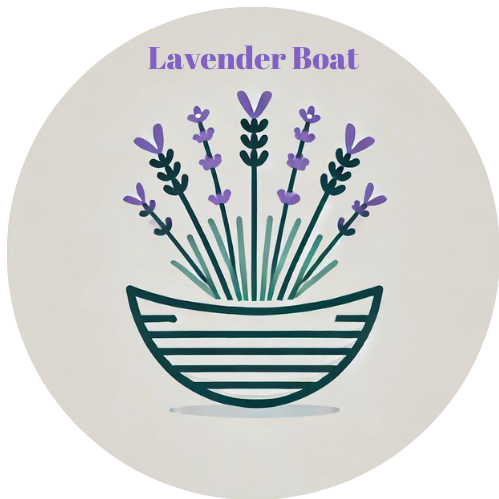With our comprehensive guide, discover how to use lavender for respiratory health. Learn about its benefits, usage methods, and why it’s a fantastic natural remedy for better breathing.
Listen to the Guide:
Hello Friends
We all take breathing easy for granted until we encounter respiratory issues. Whether it’s a common cold, allergies, or something more chronic, these problems can take a toll. But what if I told you that lavender, that gorgeous, fragrant flower, can help with respiratory health? Today, we’ll explore how lavender can benefit your lungs and help you breathe easier. So, let’s dive into the fragrant world of lavender and its incredible respiratory benefits!
Understanding Respiratory Health
Our respiratory system is essential for supplying oxygen to our bodies and removing carbon dioxide. Keeping it healthy is vital for overall well-being.
Brief Explanation of Respiratory Health and Common Problems
The respiratory system includes our airways, lungs, and the muscles and blood vessels connected to them. Common problems include asthma, bronchitis, colds, and allergies. These conditions can cause symptoms like coughing, wheezing, shortness of breath, and chest tightness. For example, my friend Tom struggles with seasonal allergies and often falls short of breath during spring.
Importance of Maintaining Healthy Respiratory Function
Maintaining healthy respiratory function is crucial because it affects our energy levels, overall health, and quality of life. It can also help reduce anxiety. Regular exercise, a healthy diet, and avoiding pollutants are key, but incorporating natural remedies like lavender can also make a big difference.
Benefits of Lavender for Respiratory Health
Lavender isn’t just lovely; it has powerful properties that can benefit respiratory health.
Scientific Evidence Supporting Lavender’s Effectiveness
Several studies highlight lavender’s benefits for respiratory health. Research published in Evidence-Based Complementary and Alternative Medicine found that lavender essential oil can reduce inflammation and improve airway resistance, making breathing easier. Another study in the Journal of Ethnopharmacology showed that inhaling lavender oil helped reduce patients’ symptoms of respiratory issues.
Personal Stories and Testimonials
Real-life examples can be very encouraging. My neighbour Sophie, for instance, has asthma and finds that using a lavender diffuser at night helps her breathe more easily and reduces her need for medication.
How to Use Lavender for Respiratory Health
There are several effective ways to use lavender to support your respiratory system. Here are the best methods:
1. Inhalation Therapy
Inhalation is one of the most direct ways to benefit from lavender’s respiratory benefits.
How to Use Lavender for Inhalation Therapy
You can try a few methods. Add a few drops of lavender essential oil to a bowl of hot water, cover your head with a towel, and inhale the steam. This method is excellent for clearing nasal passages and easing breathing.
Benefits of Inhaling Lavender
Inhaling lavender can help reduce inflammation in the airways, ease congestion, and provide a calming effect, especially during respiratory distress.
2. Topical Application
Applying lavender oil to the skin can also benefit respiratory health.
Applying Lavender Oil to the Chest
Dilute a few drops of lavender essential oil with a carrier oil, such as coconut or olive oil. Gently massage this mixture onto your chest. This method allows the lavender to penetrate the skin and relieve respiratory symptoms.
Benefits of Topical Application for Respiratory Health
Topical application can help open the airways, reduce inflammation, and ease breathing. It’s particularly effective for those who experience nighttime breathing difficulties.
3. Lavender Diffusers
Using a diffuser is another simple and effective way to enjoy the respiratory benefits of lavender.
Using Diffusers for Respiratory Health
Add a few drops of lavender oil to a diffuser and let it run in your living space. This method allows the lavender to disperse into the air, providing continuous respiratory support.
Benefits and Best Practices
A diffuser can help maintain clear airways, reduce stress, and improve sleep quality. Personally, I love having a lavender diffuser running in my bedroom at night – it creates a relaxing atmosphere and helps me breathe more comfortably.
Customising Your Lavender Use
One of the best things about lavender is how versatile it is. Here are some tips to tailor its use to your specific needs:
Combining Lavender with Other Respiratory Health Remedies
Lavender can be combined with other natural remedies for enhanced benefits. For instance, eucalyptus oil is also great for respiratory health. Combining it with lavender can create a powerful blend that supports better breathing. Personally, I mix a few drops of each oil in my diffuser during allergy season, and it works wonders.
Creating Personalised Respiratory Health Routines
Creating a routine that incorporates lavender can help maximise its benefits. For example, you could start your day with a few deep inhalations of lavender oil, use a diffuser in your living space during the day, and apply a lavender oil mixture to your chest before bed. Consistency is key to seeing the best results.
Final Thoughts
Lavender is a fantastic natural remedy for respiratory health. Its anti-inflammatory and soothing properties can help ease breathing difficulties and improve overall respiratory function. Whether you inhale it, apply it topically, or use a diffuser, there are plenty of ways to incorporate lavender into your routine. Give it a try and see how it works for you!
I’d love to hear about your experiences with lavender for respiratory health.
Have you tried any of these methods? Share your stories and tips on social media, and tag us. Let’s inspire each other with our lavender journeys!
Did You Find This Guide Helpful?







